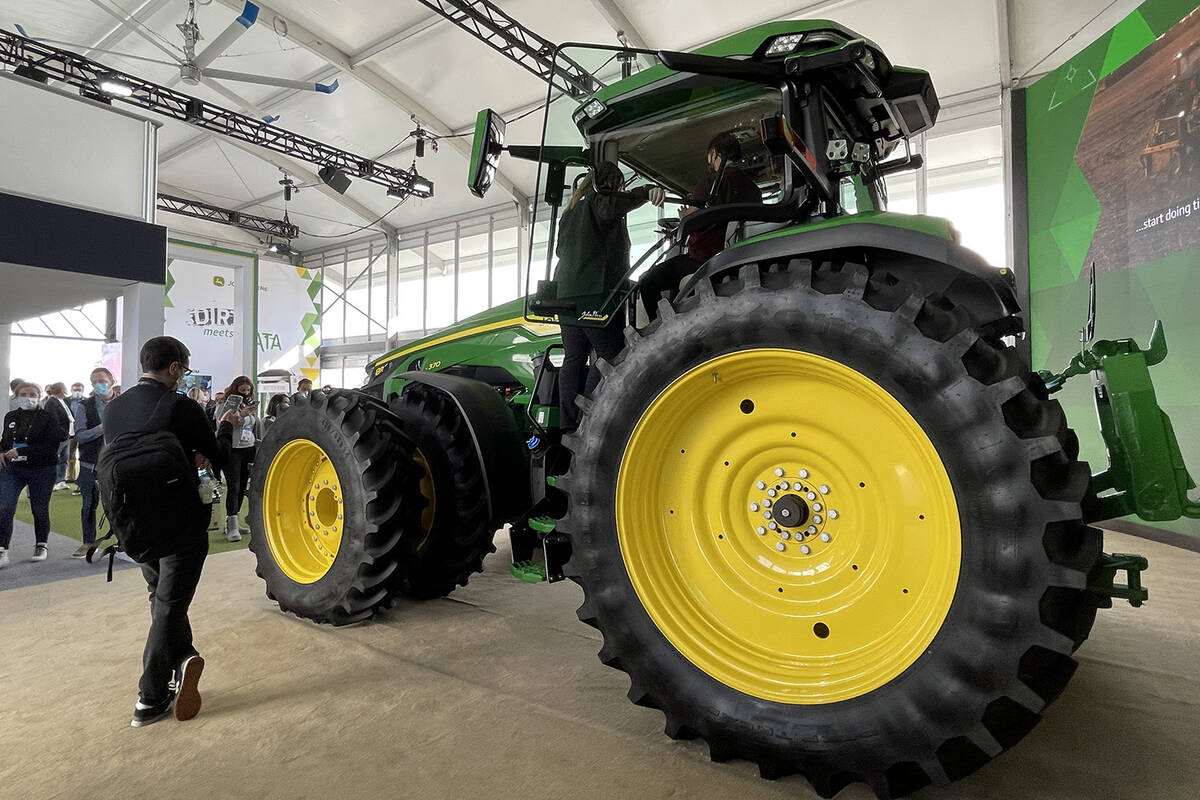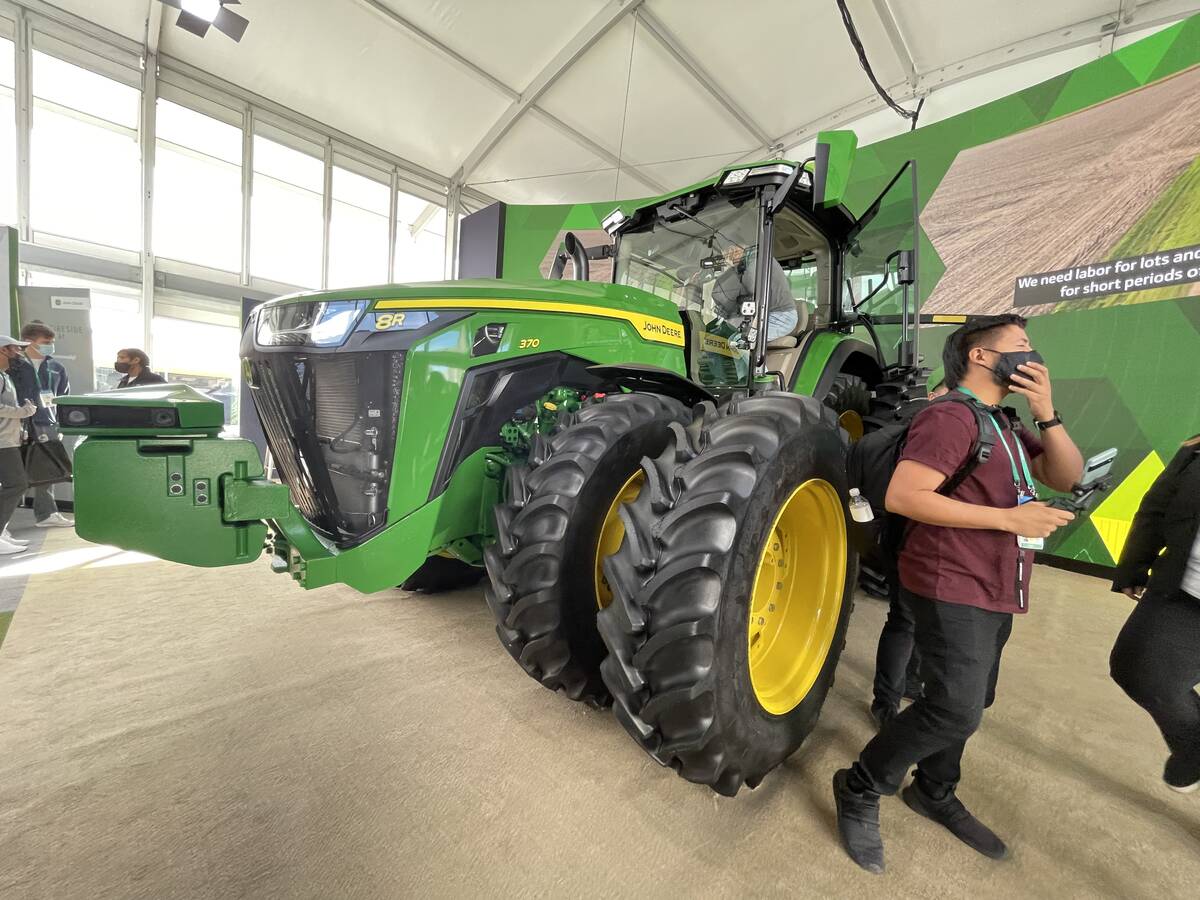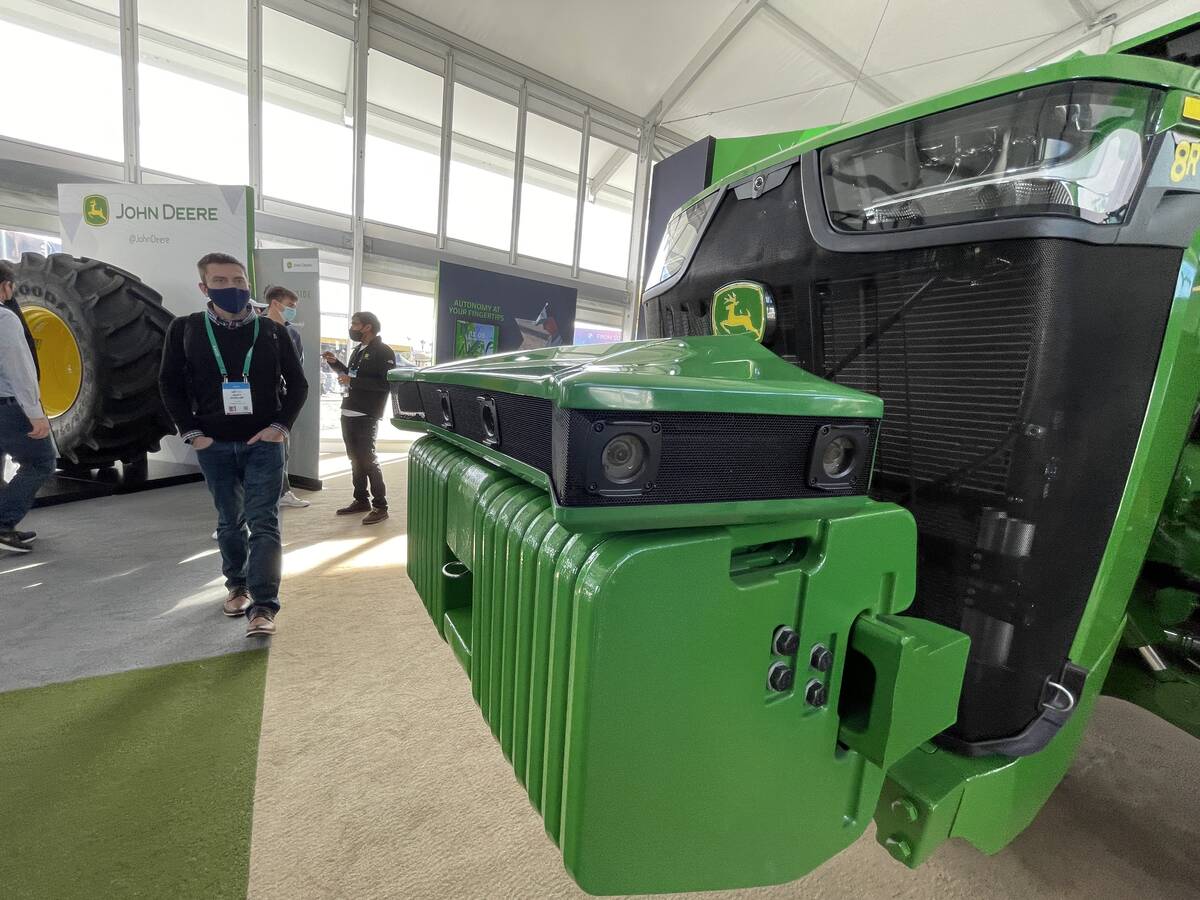John Deere plows ahead with first fully autonomous tractor at CES
As the wave of autonomous vehicles continues to progress, the movement is making its way into the agricultural industry.
John Deere introduced its first fully autonomous tractor at CES 2022 Wednesday in Las Vegas, aimed at removing a tedious task from a farmer’s workload as well as addressing a worker shortage and the aging farmer demographic.
“The farmer could drop this in the field and just leave and it does 10 hours of work for them while they’re off doing something else,” said Willy Pell, John Deere spokesman. “They can plan their day around when this job is going to finish. The labor problems that the whole world is experiencing are much more acutely felt in more sparsely populated environments, especially in the Midwest. For many farmers this really saves the businesses.”
CES is known for showcasing the latest and greatest in technology, but in the transportation realm many of the new innovations are found in concept vehicles. This isn’t the case with John Deere’s autonomous tractor; the vehicle is being showcased as one ready to be produced on a large scale.
Plans are for the tractor to be readily available to farmers later this year, the company noted, though it would not discuss pricing.
The autonomous tractor features six pairs of stereo cameras, which allows for 360-degree obstacle detection and the calculation of distance.
Images captured by the cameras at three frames per second are passed through a neural network that classifies each pixel in about 100 milliseconds and determines if the machine continues to move or stops based on whether an obstacle is detected.
“They’re perfectly interpreting their surroundings,” Pell said. “You can see the sky, you can see the ground, you can see the trees and then other anomalous objects. When we see an anomalous object, we stop.”
The autonomous tractor continuously checks its position relative to a geofence, keeping it within a determined work area and it’s accurate to within less than 1 inch.
To use the autonomous tractor, farmers need only to transport the machine to a field and map out the geofence of the field. Then it’s good to go for as long as the field’s borders stay the same.
“You likely only have to do this once in your life,” Pell said. “Once you have the geofence you drop it off, set it and forget it.”
While the tractor is working, the farmer can focus on other tasks outside of the field. They can monitor the tractor’s movement on their phone to ensure it stays on path, check its fuel gauge, see how much of a field is left to be covered and even if there were any hazards found along the way.
“Farmers when they leave, they get to know exactly what’s going on through their mobile device,” Pell said. “They can check on the job quality… they can actually look out the back cameras and see it’s doing a good job.“
Contact Mick Akers at makers@reviewjournal.com or 702-387-2920. Follow @mickakers on Twitter.

























